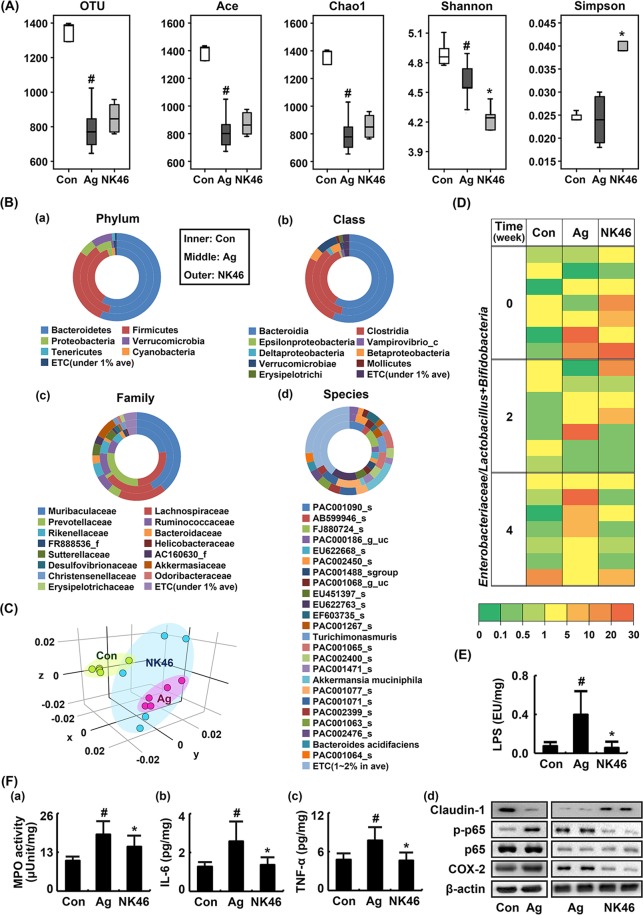Figure 4.
NK46 modified the gut microbiota composition in aged mice. (A) Effect on the number of sequences analyzed, operational taxonomic units (OTUs), abundance-based coverage estimator (ACE), Chao1, Shannon, and Simpson. (B) Effect on the fecal microbiota composition: phylum (a), class (b), family (c), and species (d). (C) Principal coordinate analysis (PCoA) plot. The plot shows the clustering pattern among control (Con), vehicle- (Ag), or NK46-treated aged mice (NK46) based on weighted pairwise Fast UniFrac analysis (n = 5). (D) Effect on the ratio of Enterobacteriaceae populations to bifidobacteria plus lactobacilli populations, assessed by the selective media BL and DHL agar plates (n = 6). (E) Effect on the fecal LPS levels. (F) Effect on the myeloperoxidase (MPO) activity (a) and IL-6 (b), TNF-α (c), claudin-1 and COX-2 expression, and NF-κB activation (d) in the colon. IL-6 and TNF-α levels were measured using ELISA and COX-2, claudin-1, p65, p-p65 were using immunoblotting. Test agent (Ag, vehicle alone; NK46, 1 × 109 CFU/mouse/day) was orally administered for 1 month in aged mice. Control mice (Con) were treated with vehicle alone. All data were expressed as mean ± SD (n = 6). #p < 0.05 vs. Con group. *p < 0.05 vs. Ag group.

